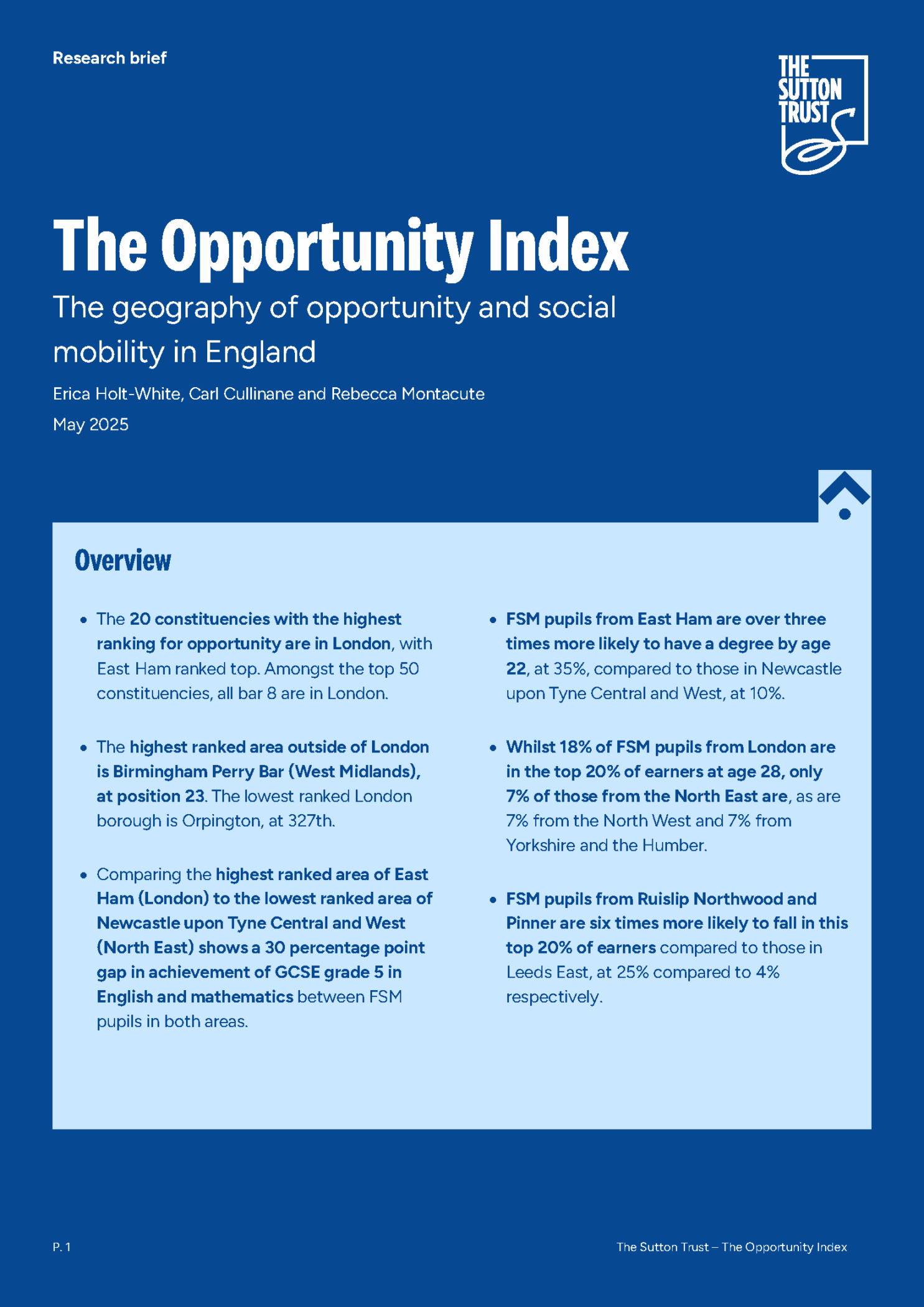Opportunity is not evenly spread across the country. A young person’s socio-economic background – including the income level of their family, their parents’ educational qualifications, and their family’s wealth – all play a critical role in shaping their future.
But as well as variations between families and across socio-economic groups, Britain is also highly divided geographically. It is a country in which where you grew up can have as much, if not more impact, than your family’s individual socio-economic circumstances.
In this report, we provide the most detailed ever look at the geography of opportunity and social mobility in England. We closely examine how socio-economic background, geography and opportunity interact, with data looking at both parliamentary constituency and regional level in England. From educational attainment, to opportunities in higher education and employment, the research compares the outcomes of young people across the country, with a particular focus on the chances of social mobility for young people from lower income homes.
Alongside the brief, we have published an interactive map. The map uses our rankings of constituencies in England according to a range of measures across the life-course, from school attainment to earnings, for young people eligible for free school meals (FSM) at secondary school, allowing for a more granular look at outcomes in different areas across the country.
